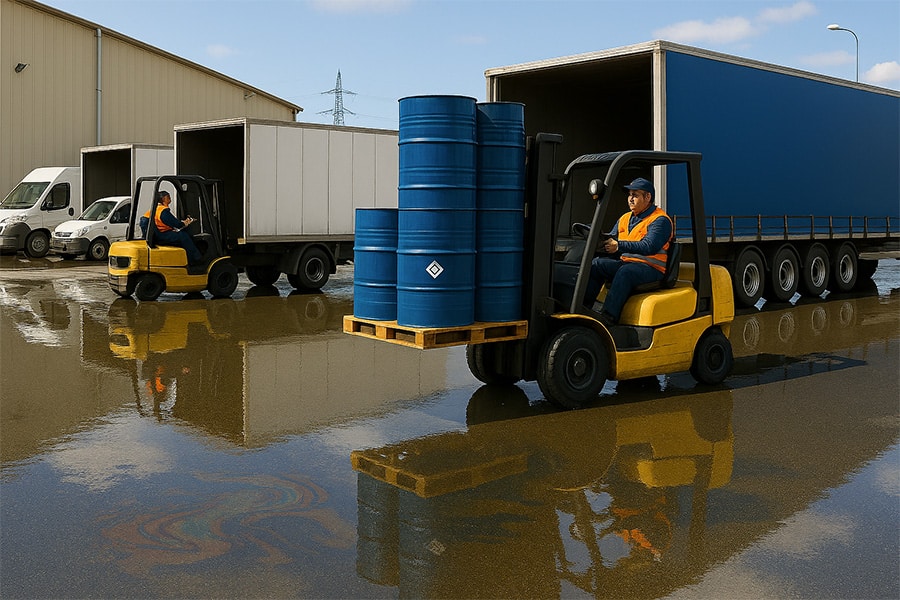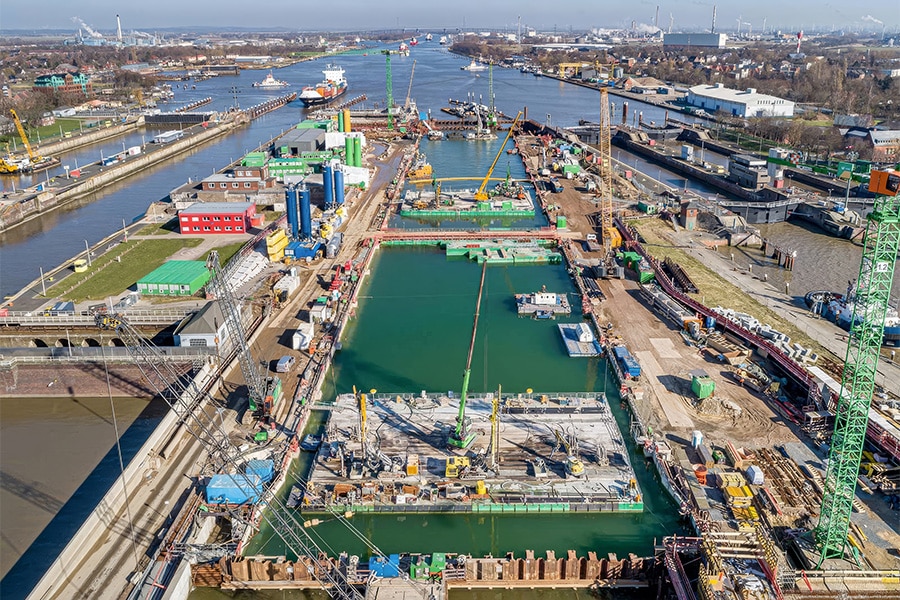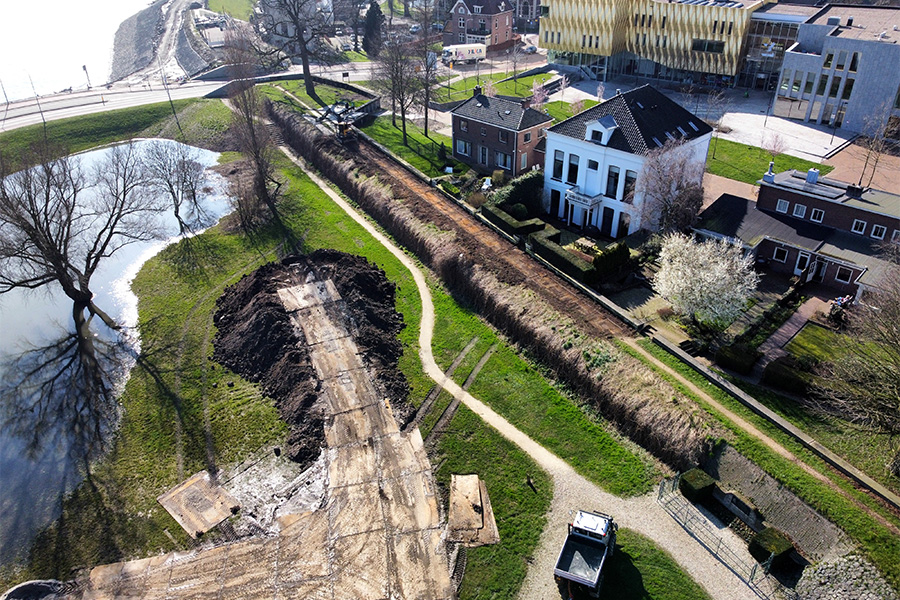
Tiel dike reinforcement requires innovative execution design from engineering firm ABT
Commissioned by FPH Ploegmakers, engineering firm ABT elaborated the engineering of the Dijkversterking Stad Tiel project into an implementation design. The dike reinforcement consists of a combination of coupures, sheet pile walls, earthwork and a filter technique. What makes this project particularly special and interesting, according to project leader Thomas Lankreijer, is the constructive aspect where a multitude of (innovative) techniques have been used.
"The overall picture of all the different techniques is typical of this project as far as I am concerned," Thomas said. "This includes CSM walls, (un)anchored sheet piling, plastic sheet piling, wing walls, anchored walls with piles behind them, new and existing cutoffs, revetment, earthwork, capstone, and certainly not forgetting the coarse sand barrier. To bring to fruition the use of all these techniques in a relatively small area is something that will certainly stay with me from this project."
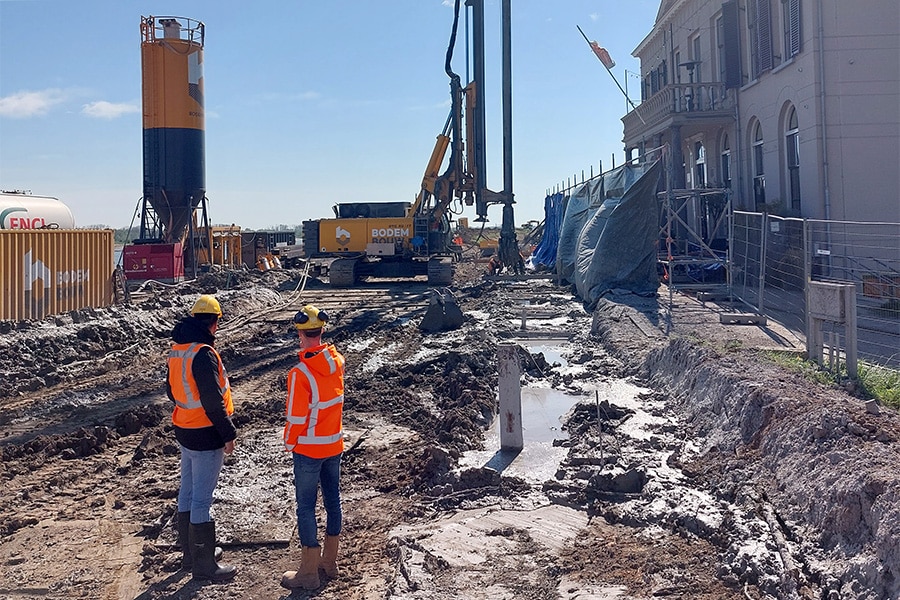
Monumental properties require customization
he design and detailing of structurally reinforced dike reinforcements is right up ABT's alley. The engineering firm is particularly strong in specialized work where all disciplines come together. For example, the firm worked on Jonas', the innovative housing concept in IJburg, Forum Groningen, Rechtbank Amsterdam and the Eye Film Museum in Amsterdam. Specifically in the field of dike reinforcement, ABT has proven its service in various projects and most recently the Salmsteke section of Sterke Lekdijk. Dijkversterking Stad Tiel is unique because of working in a built environment with many buildings. One of these (monumental) buildings is the Grand Café Bellevue. Near this building, CSM walls have been applied in the primary flood defenses. Thomas: "It is an existing technique that is often used for inner-city cofferdams, but it is also very suitable for dyke reinforcement and historical locations such as Tiel. CSM stands for 'Cutter Soil Mixing', in which the soil is mixed with a cement mixture. In this mixture, steel profiles, which provide the strength of the wall, are suspended at height. Unlike installing ordinary sheet piling, this technique does not cause vibrations."
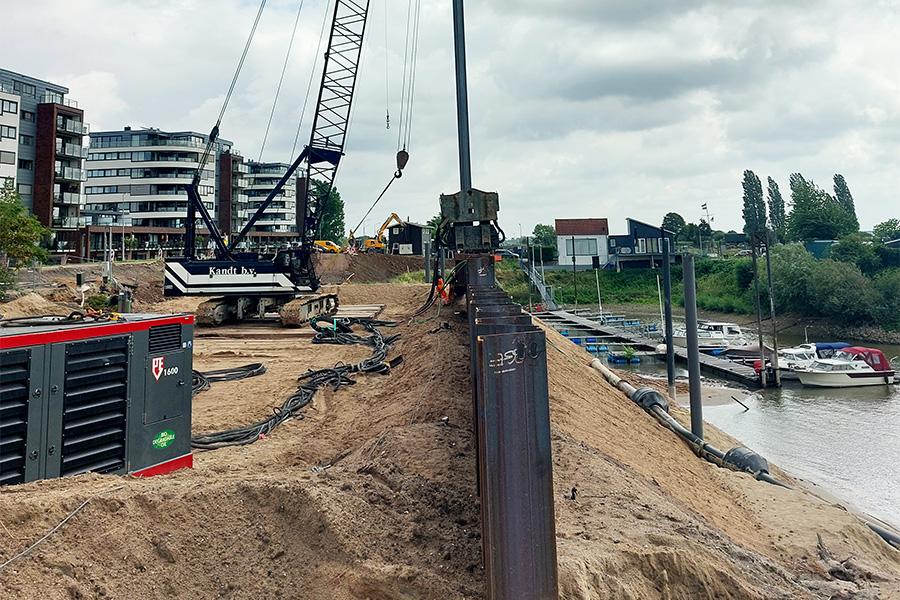
Special sheet pile construction
Another challenge was the sheet pile construction at the port of Tiel. This was anchored into the ground with a double row of grout anchors. "For this, our engineers devised an ingenious purlin construction and associated anchor chair detail including 3D calculation models to distribute the concentrated forces from the anchors while ensuring the stability of the sheet piling. Here we also had to take into account the apartment complex yet to be built. This was an additional challenge," Thomas explains. "By first installing and measuring the foundation piles, the final anchors for the sheet piling could be accurately positioned based on the measured position of the piles and sheet piling."

Existing and new cutoffs in flood control
In addition to the use of special techniques, the project includes the renovation of existing and new coupures. The existing coupures are both concrete and masonry. The new coupures are made entirely of concrete and constructed directly at the correct height. With concrete floor beams and cast-in anchor plates for extra strength, these coupures offer a resistant solution for the expected higher water levels in the future. "This definitely involves a piece of specialized knowledge from us that allows us to repair and improve existing concrete structures."
Innovative filter technology
One other thing Thomas would like to mention is the innovative filtering technology, the coarse sand barrier, which prevents piping at the Amsterdam-Rhine Canal. "This technology holds back fine sand while groundwater passes through. Because of this barrier, the stability of the dike is reinforced and the risk of failure due to piping is basically minimized forever."
Integral cooperation
Besides the various constructive challenges, Thomas is especially proud of the collaboration within the project. "It is a very nice example of integral cooperation and approach. Our teams from the geotechnical and infra disciplines worked closely together to arrive at the final design. As an engineering firm, we were able to demonstrate our added value. And we are proud that, together with FPH Ploegmakers, Waterschap Rivierenland and the various subcontractors, we are ensuring that Tiel and its surroundings will be protected from high water for decades to come."

